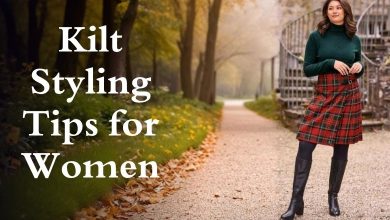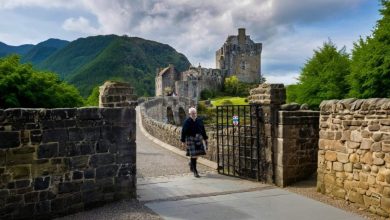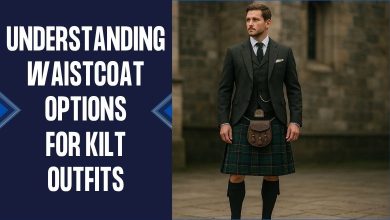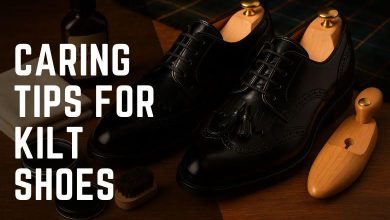Tips to Ensure Kilt Outfit Elements Match Appropriately
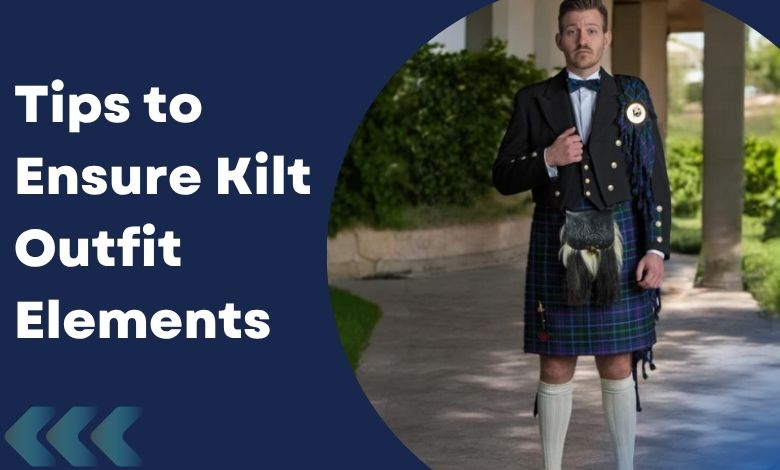
Wearing a kilt outfit is a meaningful experience, especially when all the elements are worn correctly and with purpose. The trend of wearing kilts is rising in the UK, USA, and several other Western countries. Many beginners don’t know how to match or attach kilt accessories. They often ask queries on different platforms about Scottish Highland dress. It inspired us to dedicate an article covering this particular topic to help them wear kilt outfits appropriately.
Table of Contents
ToggleMatching Kilt Outfit Elements
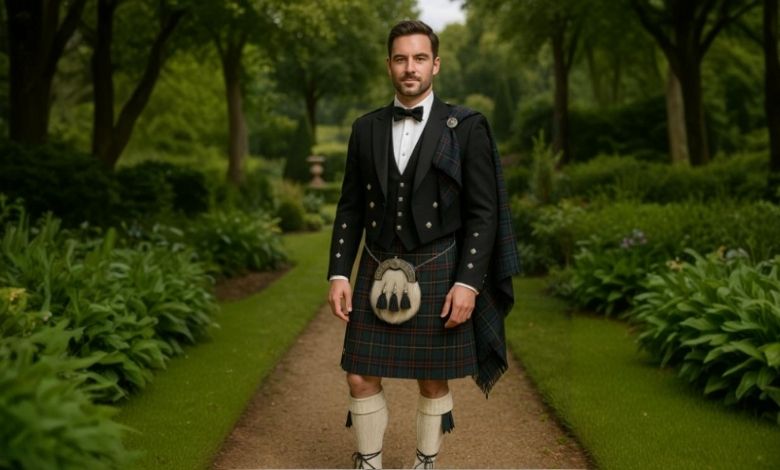
Wearing a kilt is about paying respect to heritage with flair and accuracy, not merely dressing traditionally. It might be daunting for novices to coordinate every component. By making the process easier, we guide you through the process of dressing correctly and with pride, from the kilt to the brooch.
Start with the Kilt
Men’s kilts are the most crucial and central part of the Scottish Highland dress and it is what everyone notes first. The decision of kilt selection must be wise because the colours, shapes, and designs of other elements largely depend on it. Though kilts are available in many variations today, traditional kilts are a top choice for formal events. Therefore, the important point here is understanding the meaning of tartan patterns.
Coordinate the Jacket and Waistcoat
Now that you have chosen a kilt for you, it’s time to find matching kilt outfit elements. Let’s start with jackets and waistcoats. Scottish jackets also exist in several types today and these variations are suitable for different events. Waistcoats typically accompany jackets and are made from matching fabric. Both of these apparel are made with the same fabric and differ in design. Below are popular jacket and waistcoat types, along with guidance on when to wear each.
| Argyll Jacket and 5-buttoned Waistcoat | Formal to semi-formal occasions |
| Prince Charlie Jacket Along with a Vest having 3 buttons | Highly acceptable at strictly formal or black-tie events |
| Casual Kilt Outfits | Good to go for informal events |
Choose the Right Shirt
Now, let’s look at how to ensure your shirt complements the rest of the outfit. If you wear a Ghillie/Jacobite shirt at any ceremonial or formal event, it ensures a correct matching. Similarly, wearing casual shirts in relaxed settings such as working environments or Highland games also proves your choice to be right.
Sporran Selection
One accessory that symbolises a kilt ensemble is a sporran. Since traditional and modern tartan kilts lack pockets, the sporran serves as a functional and decorative accessory. Sporrans have many types. Full-dress sporrans are ideal for formal events while day sporrans are suitable for casual attire. Semi-dress sporran is another popular variation which is appropriate for semi-formal to informal settings. Therefore, you have to confirm that Sporran’s metal finish matches other chrome items such as kilt pins and buckles for visual coherence.
Kilt Hose and Flashes
Kilt hoses are traditional Scottish socks that are longer than standard ones. To maintain their match with your tartan kilts, prioritize muted shades like milk, charcoal, or dark green. The tiny garter ribbons called flashes, which keep the hose in place, need to complement or highlight a tartan hue.
Accurate Footwear
Your choice of footwear should match the overall formality of your kilt outfit, opt for Ghillie brogues for formal wear and simple brogues for casual settings. Traditional kilt shoes, Ghillie Brogues, have a long lacing system. This particular design associates them to ceremonial occasions. Therefore, you must select colour and finish carefully, so they should complement other accessories like belts and sporrans.
Fly Plaid & Kilt Brooch
The fly plaid puts a ceremonial touch to formal kilt outfits. These accessories are specific to Prince Charlie’s jacket. The fly plaid drapes over the shoulder and is secured with a decorative piece called a kilt brooch. Tartan patterns of the plaid should be exact to the kilt’s sett. The brooch, on the other hand, should also complement other metal accessories, such as sporran or belt buckle.
Other Accessories That Complete the Look
To truly complete a kilt outfit, consider smaller accessories that enhance both function and form. A kilt pin is placed on the lower right front of the kilt to prevent flapping and add weight for better drape. The belt and buckle should match the other metal accessories and align with the formality of the outfit. To provide a last Highland touch, a little ceremonial knife called Sgian Dubh is tucked into the kilt hose.
Kilt Outfit Do’s and Don’ts
Remember, there are many more things beyond matching the accessories of kilt outfits. There are a few things you must do while wearing an outfit. Similarly, you must be careful about a few things too. Let’s have a look at the do’s and don’ts of kilt outfits.
Do’s of Outfit
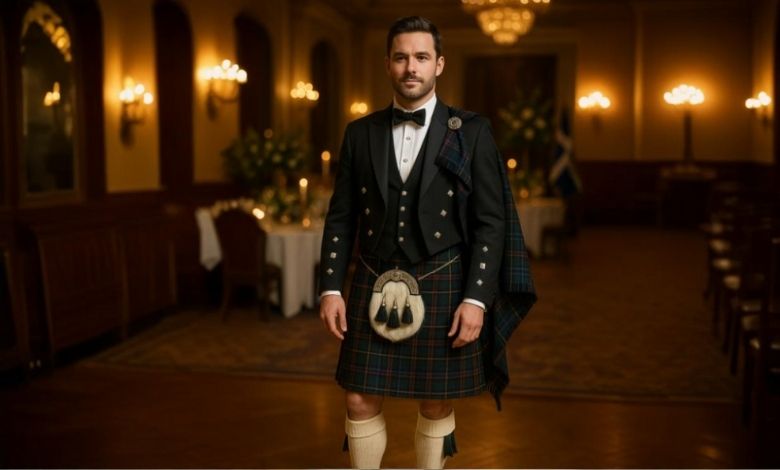
- All of the metal finishes of kilt outfits including belt buckles, sporrans, and brooches should perfectly complement each other for an enhanced and distinctive impact.
- The selection of tartan must be careful because the kilt’s design influences all of the outfit’s complimenting pieces.
- Do wear an appropriate jacket and waistcoat for a specific event to match the level of formality.
- The flashes and hose on your kilt should elegantly promote or enhance the tartan tones of your kilt.
- Keep your clothing clean and in good shape for a dignified appearance, paying particular attention to coats, sporrans, and kilts.
Don’ts of Scottish Attire
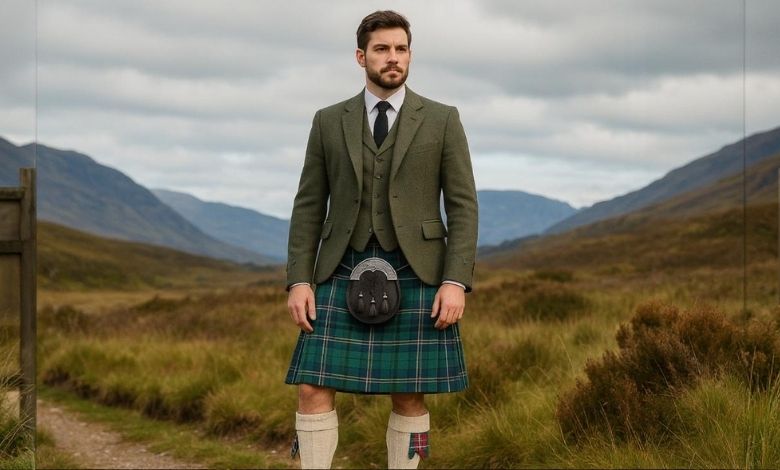
- Avoid wearing day sporrans with dress coats or Ghillie brogues with casual shirts for example.
- Wearing novelty or humorous kilts for formal occasions is disrespectful to the Highland clothing tradition.
- Make sure your fly plaid, kilt pin, and sporran are securely fastened to prevent while you move.
- Your kilt should hang at the natural waist, just over the hip bones. Don’t let it hang too high or too low.
- Consistency preserves the visual heritage and stylistic correctness, thus avoiding mismatching tartans or plaids, particularly fly plaids or flashes.
Choose Utility Kilt UK to Buy Outfit Accessories
Are you interested in purchasing a kilt outfit but unsure of where to get the ideal one? Let us help you explore Utility Kilt UK to experience the ideal fusion of quality, elegance, and history. Being a reliable provider of Scottish attire, we ensure offering genuine accessories. Every item that we provide is well-made and long-lasting. In addition, you get speedy shipment, excellent customer service, and attachments with seamless metal finishes and designs. For comprehensive, dependable kilt outfits, The Utility Kilt is your next retailer because of its attention to every detail and dedication to Scottish heritage.
FAQs About Kilt Outfits Elements
Can I wear a belt with a kilt, and when is it appropriate?
What length should my kilt be?
A traditional kilt should sit at the waistline naturally and fall to the middle of the kneecap. Accurate length depends on your height and body shape. You can get help from this kilt chart size to find the exact size.
Are there any rules about who can wear certain tartans?
How do I avoid clashing colors in my kilt outfit?
Choose a colour that complements different attachments of the attire including shirt, vest, hose, and other accessories. Ensure that there may not be colour clashes in the outfit. Similarly, you can opt for a neutral foundation like white, black, or grey. Choose a vest that either adds a slight distinction or complements the colour of your kilt. Black or brown shoes and black or charcoal hose are often safe choices for a formal appearance.
How to care for and maintain my kilt and accessories?
Maintaining a kilt ensures its polished appearance with a longer lifespan. Doing so requires attention. You should focus on routine cleaning and appropriate storage. Quickly remove the stain to keep your kilt and accessories in good condition. Do not forget to air out your kilt after every wear. Spot-clean it if necessary, and finally store it somewhere dry and cool.
